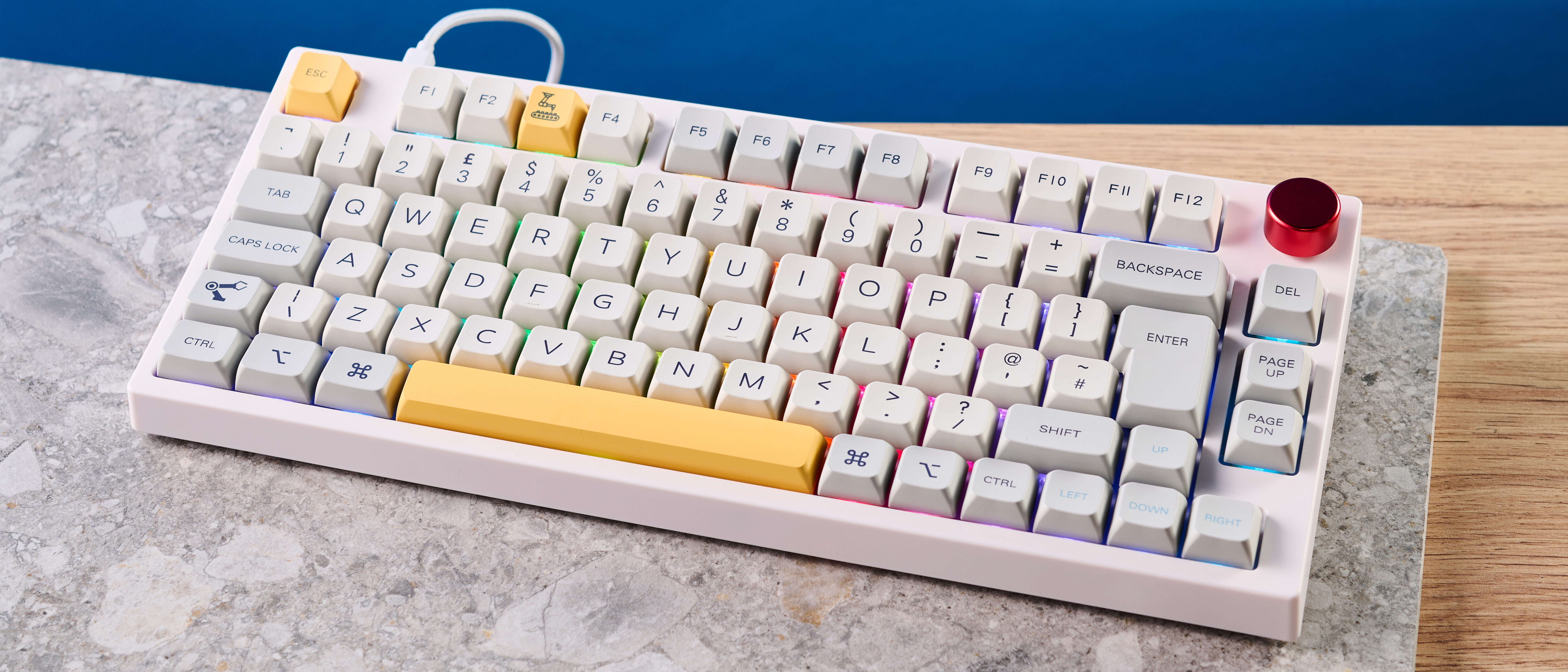Tom's Guide Verdict
The retro-looking Epomaker TH80 Pro is hot-swappable for maximum customization, comes with a handy app to personalize the keyboard to your liking, and has been a great typing experience. But you might want to invest in a wrist rest if you type for hours, and keep the manual on hand to remind yourself of secondary functions.
Pros
- +
Hot-swappable switches for more personalization
- +
Great build quality
- +
Incredible battery life
- +
Handy companion software
Cons
- -
Bluetooth is slow to connect when waking
- -
No secondary functions printed on keycaps
Why you can trust Tom's Guide
Price: $99 (Epomaker)
Switches: Flamingo (Linear), Budgerigar (Tactile), Wisteria, Gateron Pro blue/black/brown/red/yellow
Layout: 75%, 80 keys
Operating system: macOS, Windows
Backlighting: RGB
Paired devices max: 3
Battery: 4,000 mAh
Measurements: 12.9 x 5.5 x 1.5 inches (328mm x 142mm x 40mm)
Weight: 35.2 ounces (1kg)
When you buy one of the best mechanical keyboards, you expect it to meet certain criteria — an ergonomic layout and that sweet “thock” sound you like, decent build quality and a battery that doesn’t run out after only a couple of days. You might also want to be able to customize it, and that’s where the Epomaker TH80 Pro comes in, especially if you don’t want to spend over the odds.
The TH80 Pro is compact enough to free up space on a desk, and has a sturdy grip so you don’t accidentally move it while typing. With a retro finish, red rotary control knob and fun customizable RGB backlighting, it looks the part, too. If you’re buying from the Epomaker website, it’ll cost you $99, which is great value for money for a keyboard of this caliber.
There are a few downsides, though, that are worth considering before you click ‘add to cart’, such as the keyboard being slow to reconnect when waking, and no secondary functions printed on keycaps.
For the complete breakdown, read our full Epomaker TH80 Pro review.
Epomaker TH80 Pro review: Cheat sheet
- What is it? A 75% hot-swappable mechanical keyboard good for both gaming and typing, with beautiful RGB effects which can be altered to your liking.
- Who is it for? For people who want a compact, retro-looking and customizable keyboard but don’t want to spend too much money.
- How much does it cost? The Epomaker TH80 Pro is available for $99 / £103.
- How is the typing? Great, and it sounds lovely, but you’ll need a wrist rest for long hours.
- Anything missing? Better Bluetooth connectivity, and secondary functions printed on keycaps would be nice.
Epomaker TH80 Pro review: The ups
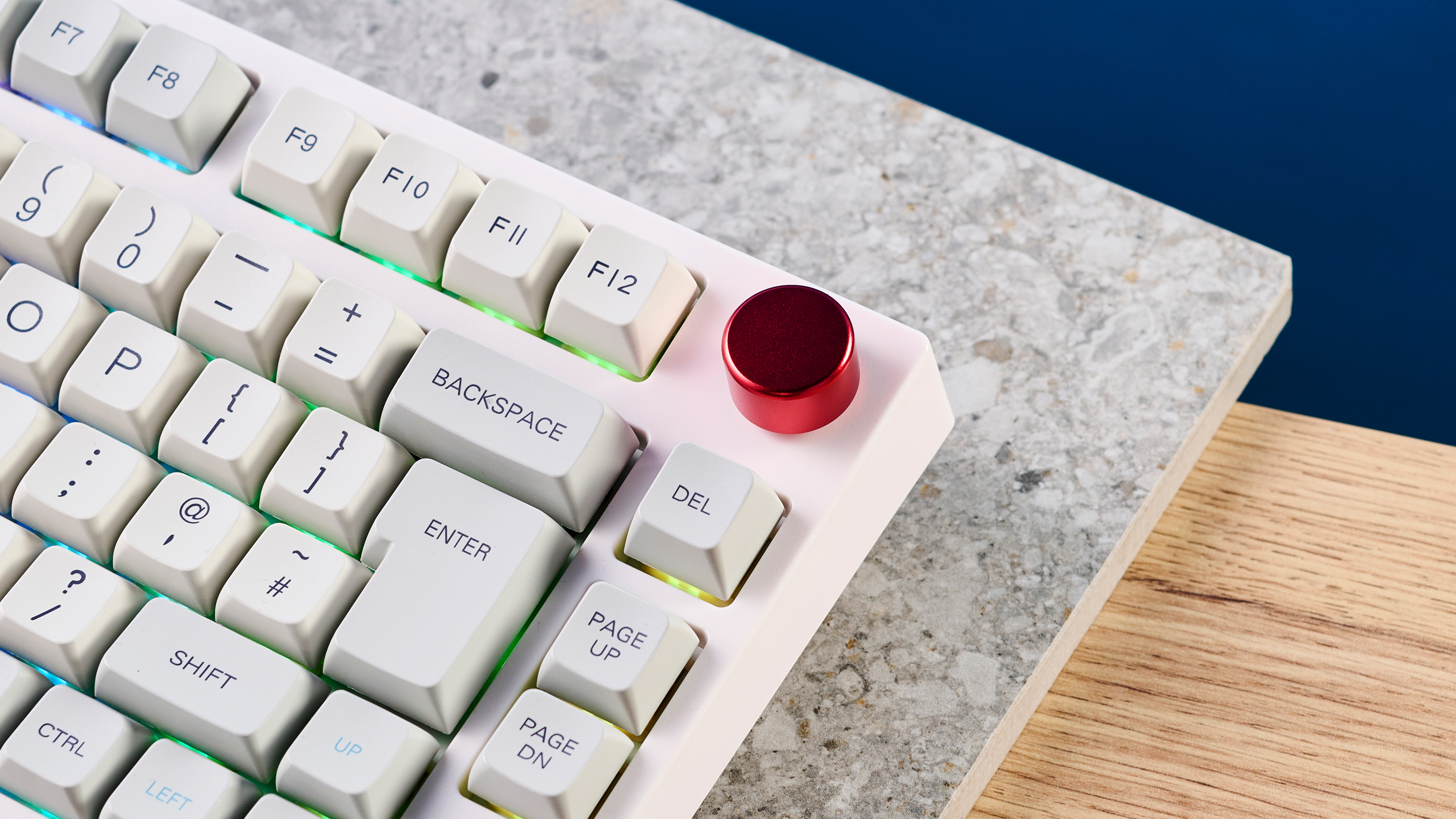
The Epomaker TH80 Pro’s pros definitely outweigh the cons. From a sturdy build and impressive battery life to hot-swappable switches for customization, this mechanical keyboard is great value for money.
Design and build quality
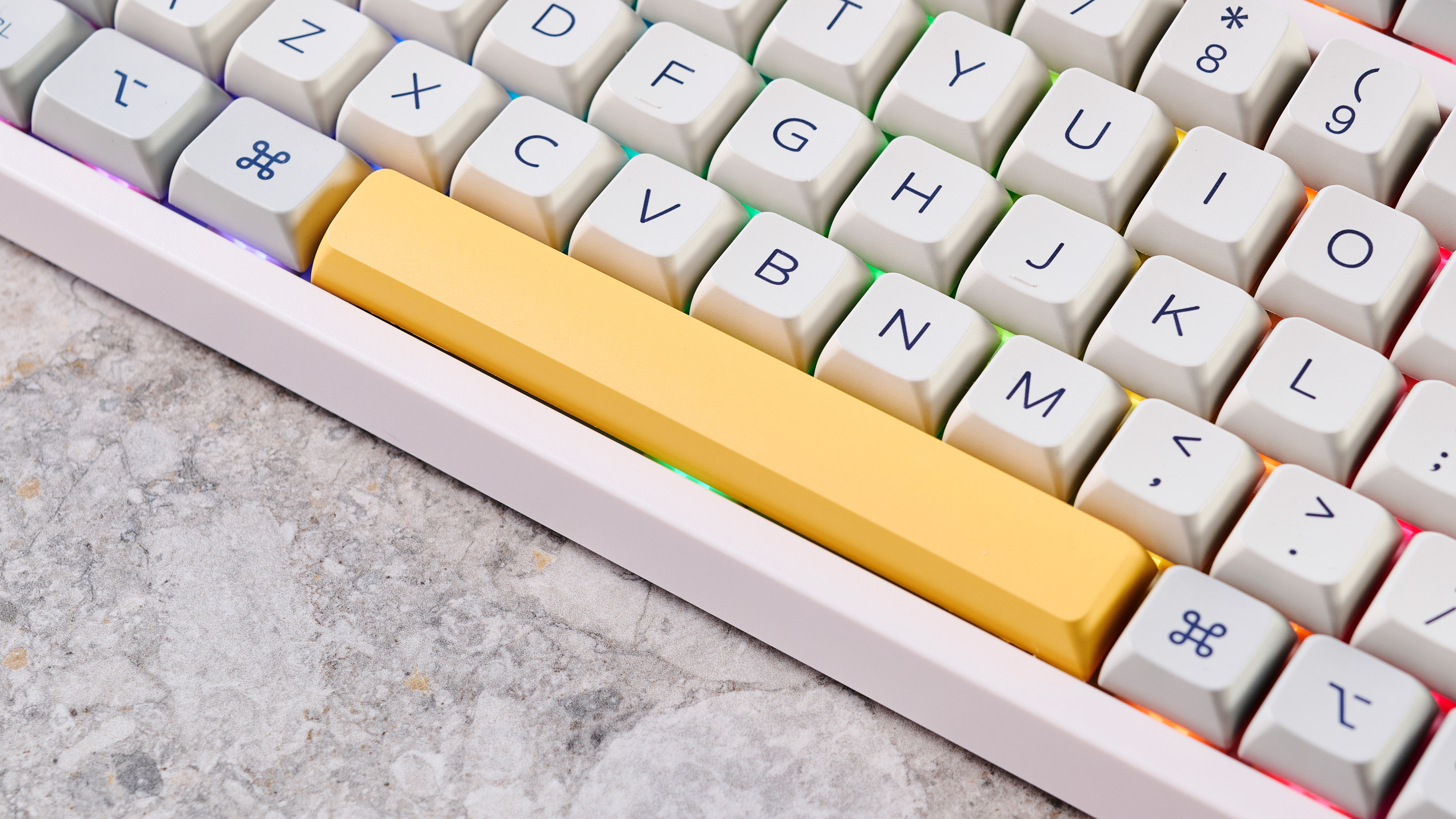
The Epomaker TH80 Pro is a robust piece of machinery. When I first took it out of the box, I was immediately impressed by its sleek, retro aesthetic. The base of the keyboard is made with white plastic, and I couldn’t see any signs of poor construction.
As a 75% tenkeyless keyboard, it doesn’t have a number pad (sorry, numpad fans) and sports a total of 80 keys. It also comes in two layouts, ANSI and ISO. Oh, and it’s got a rotary knob too — placed in the top right corner of the keyboard, which makes me feel like somewhat of a DJ when I’m changing the volume.
Get instant access to breaking news, the hottest reviews, great deals and helpful tips.
Measuring 12.9 x 5.5 x 1.5 inches and weighing 35.2 oz, it’s compact and light enough to fit into my backpack, but heavy enough to stay put on the desk. On the bottom, you’ll find four retractable rubber feet to prop up the keyboard at two different angles. I was happy with how well the keyboard stayed put when I tried to drag it along the table, but this varied depending on the feet I used. With the smaller feet, the keyboard didn’t resist as much as it did with the bigger feet. That’s good because I personally like having more height.
Typing experience
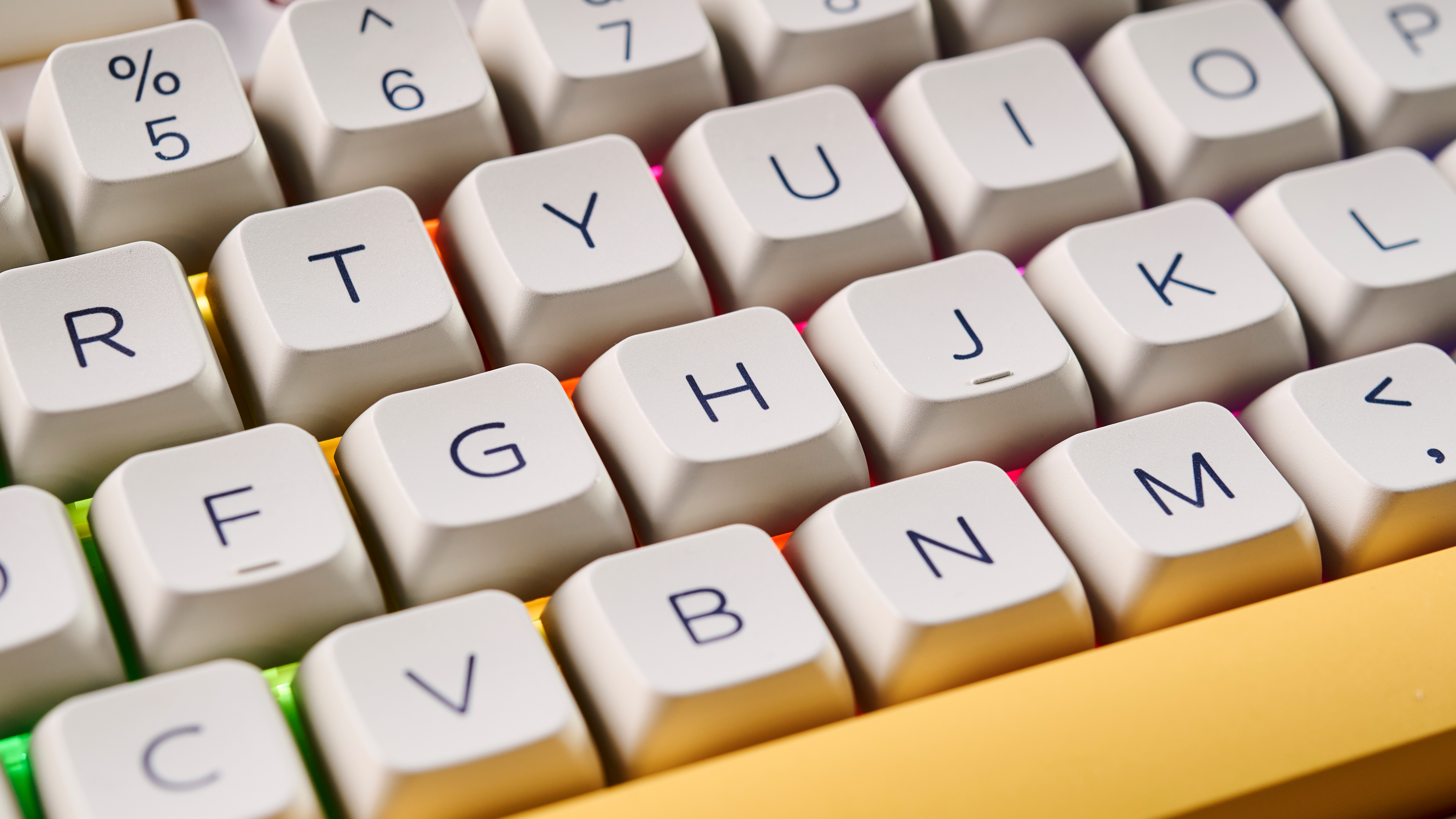
The big question: how’s the typing? I loved it. I tested the Budgerigar Switch (Tactile) and it sounded beautiful. The MDA keycaps — spherical without much height — are made using PBT dye-subbed materials and have a great thock!
The MDA keycaps also make it less likely for you to make a typing mistake, and my typing test confirmed that with a score of 67 words per minute at 91.08% accuracy. That makes this ideal for office use. Also, the keycaps are oil-resistant, don’t appear shiny and stay true to color, so you don’t need to worry about them looking worse for wear over time.
Hot-swappable switches
If you aren’t a big fan of the Epomaker TH80 Pro’s pre-lubed switches, the fact they’re hot-swappable switches means you don’t have to stick with them. This allows for more customization by letting the user change switches with a switch puller (instead of having to de- and re-solder switches to the PCB).
The Epomaker TH80 Pro can accommodate both 3- and 5-pin switches, and it comes with a switch puller in the box, so all you need to do is pull out the switches and replace them with the ones you want — it’s that simple.
Companion software
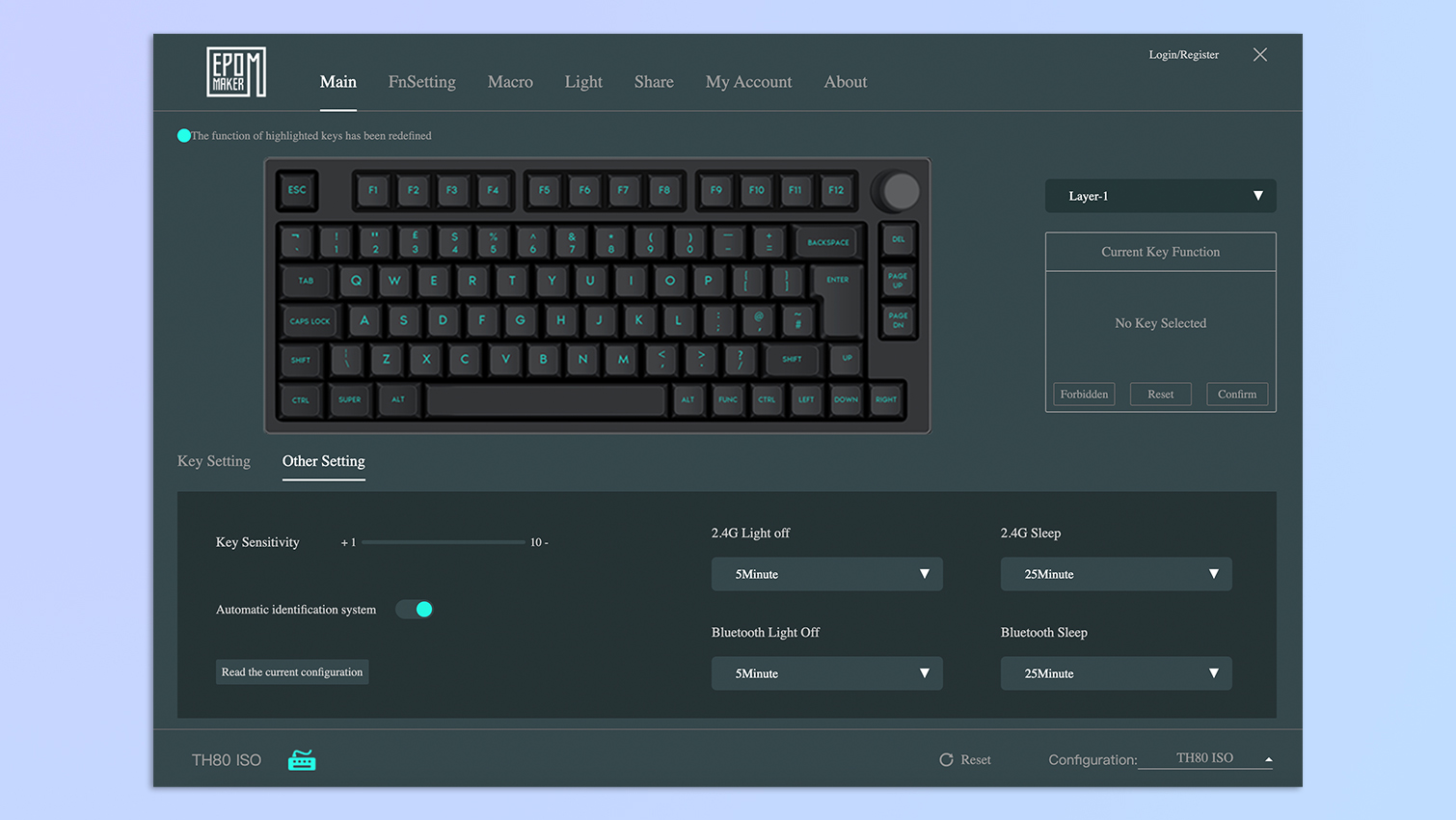
Free to download from Epomaker’s website, the driver software for macOS and Windows is fairly straightforward to use and offers a bunch of customization options. I used the software to change not only the light patterns (there are many options to choose from, by the way), but to also remap certain keys and the time it takes to go into sleep mode.
Definitely a big plus for when you’re still getting used to the several different key combinations to change the RGB patterns. Remember: you need to connect the Epomaker TH80 Pro to your laptop with the cable.
Battery life

Fitted with a 4,000 mAh battery, the Epomaker TH80 Pro boasts a massive battery life. Having tested it for 5 days (about 40 hours) and at 100% when I started, the battery at the end stood at 70%.
I had the RGB effects on almost all the time, so it probably would have lasted even longer with them off. It’s easy to check the battery on the keyboard itself, by using Fn+B which makes numbers 1 through 0 light up. For example, if 1 to 5 light up, that means it’s at 50%. A similarly priced keyboard such as the Corsair K57 RGB reportedly lasts 35 hours with standard lighting, so the Epomaker TH80 Pro does really well in this regard.
Epomaker TH80 Pro review: The downs
Alas, nothing is perfect. I’ll admit, it was love at first sight when I saw the Epomaker TH80 Pro, but the more I used it, the more I realized it wasn’t without its flaws.
Slow Bluetooth connectivity

When I was testing the TH80 Pro, I tried all three methods of connectivity to see how long it took for the keyboard to respond after it had been in sleep mode. There were no delays using the USB-C wired setup, and even with the 2.4GHz dongle plugged in, I couldn’t sense any noticeable delay. The Bluetooth connectivity, however, let me down because it’s the one I most prefer using.
When the Epomaker TH80 Pro falls asleep after having been inactive for 25 minutes (this can be changed via the downloadable driver software), it takes a while to reconnect to your laptop. You have to press a key to wake it up, wait for it to connect — indicated by the green light under one of the numbers — and start typing. When I tested it, it took just under 5 seconds, which isn’t a lot in the grand scheme of things, but when you’re gaming online, every second counts.
No secondary functions on keycaps
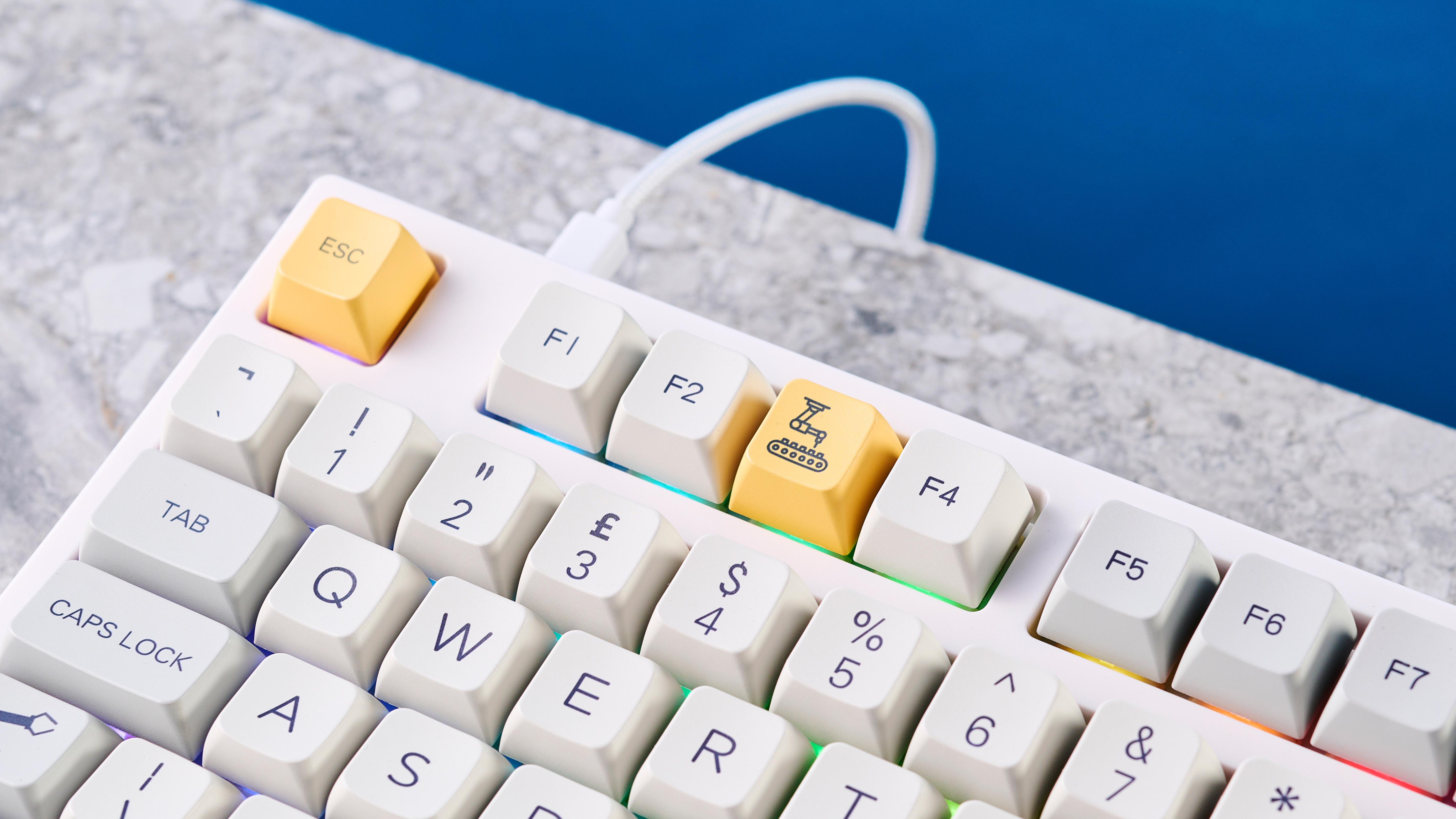
Any new keyboard takes a while to get used to, and even after using the Epomaker TH80 Pro for about a week, I had to keep referring to the manual because I couldn’t remember the secondary functions. This kept breaking my flow and directly affected my productivity. Epomaker could have made it much easier for its users by simply printing these on to the keycaps. Instead, I’m sitting here racking my brain, wondering which key takes me to the next track while I’m listening to music.
Wrist pain
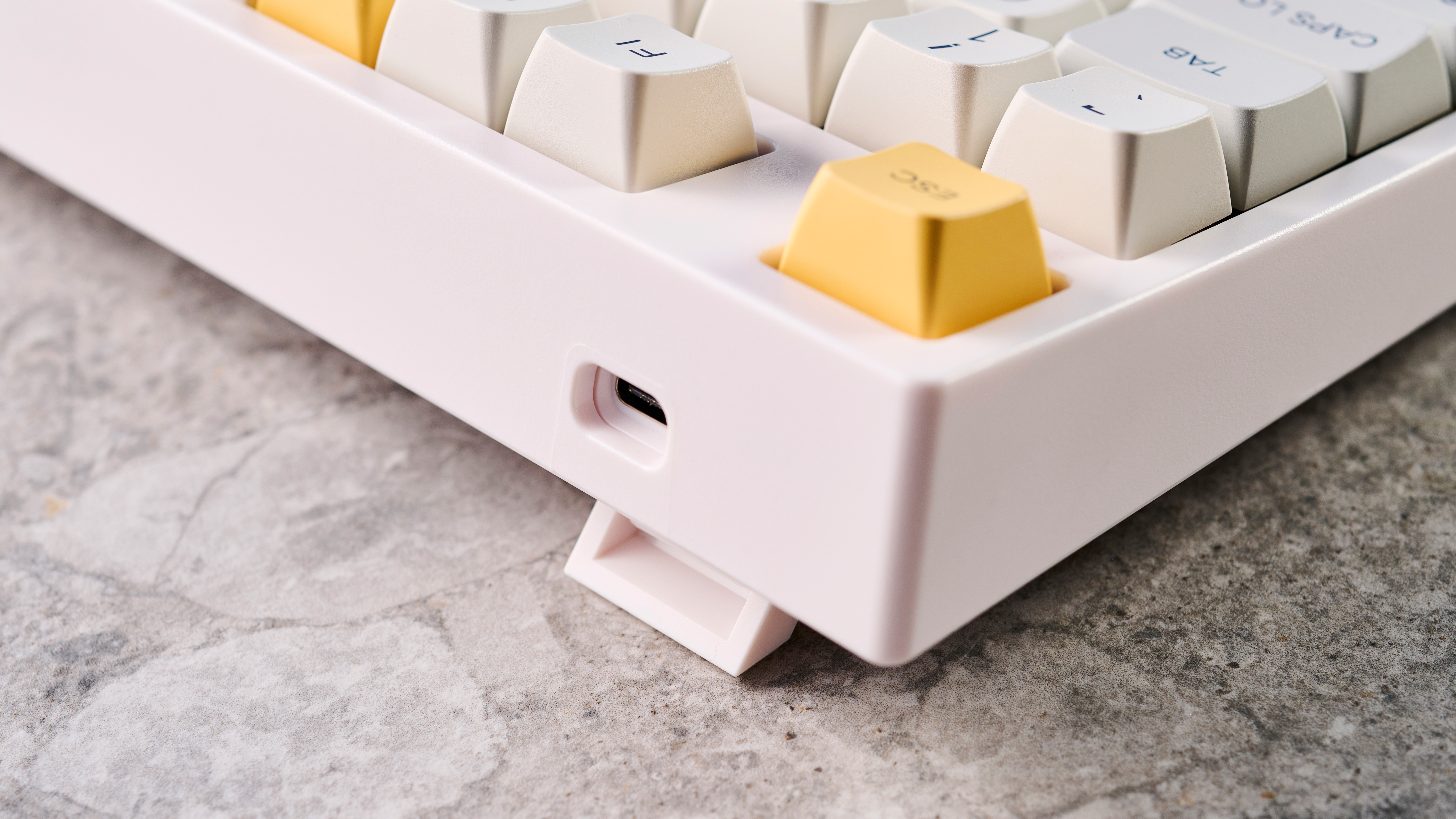
When you’re typing away for 8 hours at a desk, you want to be comfortable. A wrist rest, either attached to the bottom of a keyboard or bought separately, can be very handy.
Typing on the Epomaker TH80 Pro for hours on end strained my wrists as I needed to constantly angle them. The heights and levels of adjustability weren’t the best for me. A wrist rest would have fixed this, but you will have to buy one separately. I’ll definitely be investing in one to continue typing away.
Epomaker TH80 Pro review: Verdict
For a sub-$100 mechanical keyboard, the Epomaker TH80 Pro stands its ground. Hot-swapability is a great selling point, and for $99, it could be great for you if you’re just starting to dabble in keyboard modding.
When compared with a keyboard in the same price range, such as the Logitech G413 SE, you get a lot more features and more reliability. The Epomaker TH80 Pro’s impressive battery life even with the RGB effects on, the versatile connectivity modes, and the typing accuracy make it totally worth the money.
Because of how it sounds and feels on my fingertips, I’m sure I’ll be using the Epomaker TH80 Pro for a long time. No secondary functions printed on the keycaps and slow connectivity when waking are a small price to pay when a keyboard looks and sounds this good.

Nikita is a Senior Writer on the Reviews team at Tom's Guide. She's a lifelong gaming and photography enthusiast, always on the lookout for the latest tech. Having worked as a Sub Editor and Writer for Canon EMEA, she has interviewed photographers from all over the world and working in different genres. When she’s not working, Nikita can usually be found sinking hours into RPGs on her PS5, flying a drone (she's a licensed drone pilot), at a concert, or watching F1. Her work has appeared in several publications including Motor Sport Magazine, NME, Marriott Bonvoy, The Independent, and Metro. You can follow her photography account on Instagram here.
